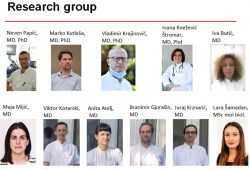RESEARCH METHODOLOGY
This study is designed as a prospective, non-interventional study.
The project is divided in 3 consecutive phases:
PHASE 1. IDENTIFICATION OF SEMAPHORINS AS BIOMARKERS OF NAFLD.
To goal is to identify semaphorins that are associated with NAFLD and to investigate their relationship with variable degrees of steatosis and fibrosis. The degree of steatosis will be estimated using the controlled attenuation parameter (CAP). Routine laboratory tests and anthropometric measures will be collected, including the components of metabolic syndrome. Non-invasive scores of steatosis/fibrosis will be calculated. Semaphorin concentration will be measured in patient sera by ELISA. The correlation between serum semaphorin concentration and other non-invasive markers of fibrosis and steatosis, laboratory and anthropometric measures will be analyzed. In addition, immunohistochemistry will be performed on liver biopsy specimens diagnosed and staged with NAFLD according to NAFLD activity score. To identify semaphorins’ gene polymorphisms associated with NAFLD, three genes with highest association with NAFLD will be sequenced. Phase 1 is registered at ClinicalTrials.gov: NCT04573543
PHASE 2. ANALYSIS OF SERUM SEMAPHORINS CONCENTRATION IN PATIENTS WITH SEPSIS AND NAFLD IN COMPARISON TO PATIENTS WITH SEPSIS AND WITHOUT LIVER DISEASE.
Adult patients diagnosed with sepsis will be offered to participate in the study. Patients will be screened for the presence of NAFLD using non-invasive procedures (US, CAP, TE, and APRI, FIB-4 and NAFLD score). Routine demographic, clinical, microbiological, treatment and laboratory parameters, including the disease severity scores (APACHE, SAPP, SOFA), will be collected and patients will be followed until discharge. Serum semaphorins’ concentration and the panel of pro-inflammatory and anti-inflammatory markers will be measured by flow cytometer microsphere-based assay. Semaphorins’ gene polymorphism and its association with other immune and clinical parameters will be analyzed.
PHASE 3. ANALYSIS OF SEMAPHORINS IN PATIENTS WITH SEVERE COMMUNITY ACQUIRED PNEUMONIA AND NAFLD.
The goals are (a) to investigate the impact of NAFLD on the course and outcome of severe pneumonia as a source of sepsis; (b) to describe systemic and local immune response to infection; (c) to describe association of semaphorins with disease severity and outcome. Serum samples and bronchoalveolar fluid (BAL) will be collected and concentrations of semaphorins and pro- and anti-inflammatory cytokines will be measured.
Presentation Video
